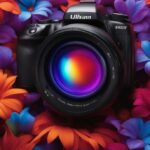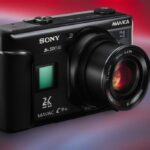Last Updated on 5 months by Francis
Have you ever wondered if your cell phone camera has the ability to capture infrared light? This technology has been used for various applications, from thermal imaging to night vision. But can our everyday devices do the job? In this section, we will explore the truth behind the capabilities of cell phone cameras when it comes to infrared photography, as well as the potential use of infrared cameras for cell phones.
While the idea of being able to take infrared photos on your phone sounds enticing, the truth is that most cell phone cameras lack the ability to capture infrared light. This is because of the infrared filter that is placed over the camera lens, which blocks out infrared light and only allows visible light to enter. However, there are external infrared cameras available for cell phones that can be attached to the device and enable you to capture infrared images.
These specialized cameras offer a range of possibilities for infrared imaging with your smartphone. From ghost hunting to wildlife observation, the applications of this technology are endless. But before we delve into that, let’s first understand the basics of infrared technology and how it works.
Contents
Key Takeaways
- Most cell phone cameras lack the ability to capture infrared light due to the infrared filter that is placed over the camera lens.
- External infrared cameras for cell phones can be attached to the device and enable you to capture infrared images.
- Infrared technology has various applications, from thermal imaging to night vision.
Understanding Infrared Technology
Before we jump into how to enable infrared on your cell phone camera and start exploring the possibilities of infrared photography with your phone, let’s take a closer look at what infrared technology actually is.
Infrared, or IR, is a type of electromagnetic radiation that falls outside the visible spectrum. Essentially, it’s a form of light that is invisible to the naked eye, but that many animals, including snakes and certain insects, can detect.
There are two main types of infrared radiation: near-infrared and far-infrared. Near-infrared lies closest to the visible spectrum and is often used in astronomy and photography. Far-infrared, on the other hand, is used in thermal imaging and has applications in medicine, security, and other fields.
Infrared photography involves capturing light in the near-infrared range, typically between 700 and 1200 nanometers. This type of photography can produce unique, otherworldly images with intriguing color tones and eye-catching contrast.
Now that we have a basic understanding of infrared technology, let’s explore how to enable infrared on your cell phone camera so you can start experimenting with this fascinating form of photography.
The Limitations of Cell Phone Cameras
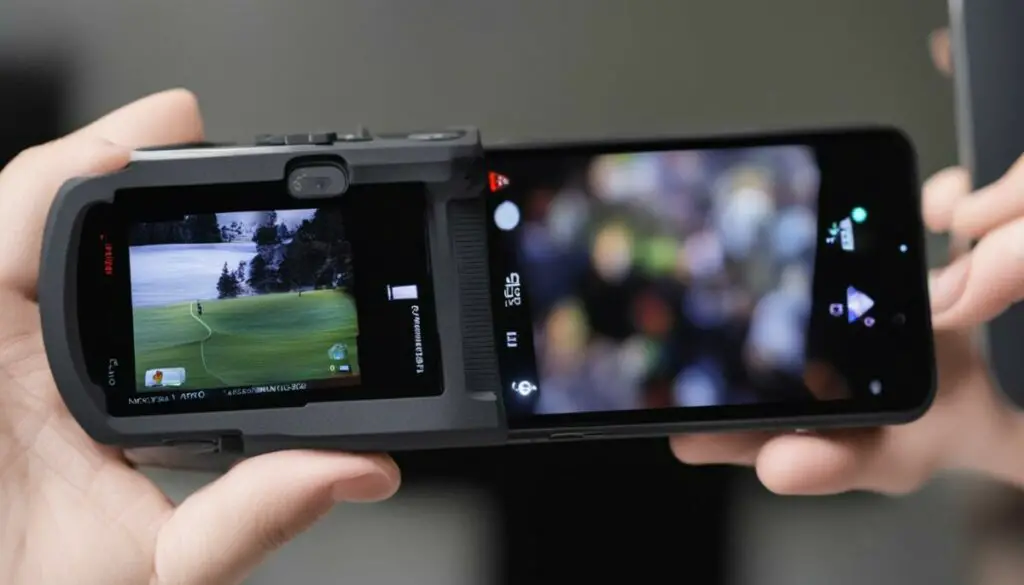
Although cell phone cameras have come a long way in recent years, they still have limitations when it comes to capturing infrared light. One major factor that impacts their ability to capture infrared is the presence of an infrared filter.
The vast majority of cell phone cameras have an infrared filter built-in, which helps to block out infrared light and prevent it from interfering with the visible light being captured. While this makes sense for typical photography, it also means that the camera is unable to pick up infrared light, making it difficult if not impossible to capture infrared images with a standard cell phone camera.
Another factor that affects the camera’s infrared capabilities is the lens. Most cell phone camera lenses are not optimized for infrared photography, with the result being that the images captured may be blurry or have poor quality.
The Role of Infrared Filters and Lenses
The infrared filter in a cell phone camera works by blocking out a portion of the light that enters the lens. This filter is typically made of glass or plastic and is placed in front of the camera’s image sensor. Its purpose is to prevent infrared light from reaching the sensor, allowing the camera to capture only visible light.
While the infrared filter is essential for standard photography, it poses a challenge when it comes to capturing infrared images. Removing the filter is possible but not recommended as it can permanently damage the camera. Moreover, even without the filter, the lens may not be optimized for infrared light, which can result in a blurry or distorted image.
The lens in a cell phone camera is designed to capture visible light, making it unsuitable for capturing infrared light. The lenses typically have a coating that absorbs infrared light and only allows visible light to pass through. Additionally, the lenses may not focus properly on infrared light, leading to issues with clarity and detail in infrared images.
The Impact on Infrared Photography
The limitations of cell phone cameras when it comes to capturing infrared light make it challenging to take high-quality infrared images. However, there are workarounds. External infrared filters and lenses can be attached to the camera, allowing it to capture infrared light. However, these add-ons can be expensive and may not be practical for everyone.
Another option is to use an external infrared camera that can be attached to the cell phone. These cameras are designed specifically for capturing infrared light, and they offer better results than using a standard cell phone camera. Smartphone infrared cameras are becoming increasingly popular, and they offer a versatile solution for enthusiasts looking to explore infrared photography with their cell phone.
Ultimately, while cell phone cameras have limitations when it comes to capturing infrared light, they still offer a great opportunity for creative experimentation. By using external filters, lenses, or cameras, it’s possible to unlock the creative potential of infrared photography with your cell phone.
Introducing External Infrared Cameras for Cell Phones
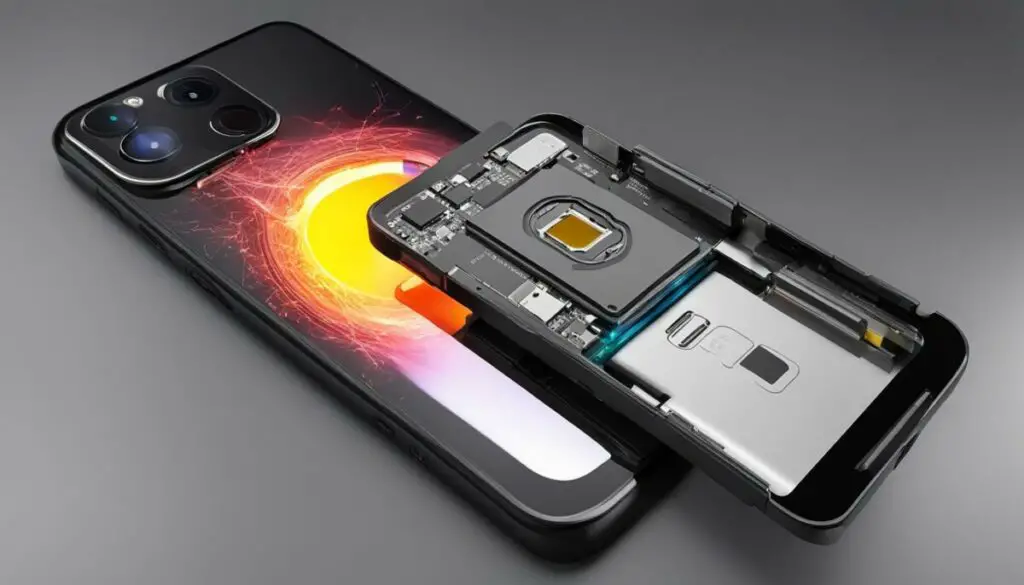
If you want to take your cell phone infrared photography to the next level, external infrared cameras are the perfect solution. These cameras can be easily attached to your smartphone, enhancing its capabilities and unlocking a whole new world of possibilities.
Not only do these cameras offer higher quality infrared imaging than standard cell phone cameras, but they also come with additional features and functionality. Some models even allow you to capture thermal images, making them ideal for a range of applications in industries such as construction, plumbing, and electrical work.
There are many options available on the market, from clip-on infrared lenses to fully-fledged smartphone infrared cameras. Below is a table comparing some popular models:
| Model | Price | Compatibility | Features |
|---|---|---|---|
| FLIR ONE Pro | $399.99 | iOS, Android | Thermal imaging, adjustable MSX technology, VividIR image processing |
| Seek Thermal Compact | $249.99 | iOS, Android, USB-C | 206 x 156 thermal sensor, temperature detection, focusable lens |
| FLIR C3 | $699.99 | iOS, Android | MSX technology with FLIR Lepton sensor, 640 x 480 IR resolution, Wi-Fi connectivity |
As you can see, there are a range of options available at different price points with varying features, so it’s important to do your research and find the right fit for your needs.
By incorporating an external infrared camera into your cell phone photography toolkit, you’ll have the ability to capture stunning and unique images that were previously out of reach. Whether you’re interested in capturing beautiful landscapes or conducting home inspections, the possibilities are endless.
Now that you know about external infrared cameras for cell phones, let’s dive into the process of capturing infrared images with your cell phone camera in the next section.
The Process of Capturing Infrared with Cell Phone Cameras
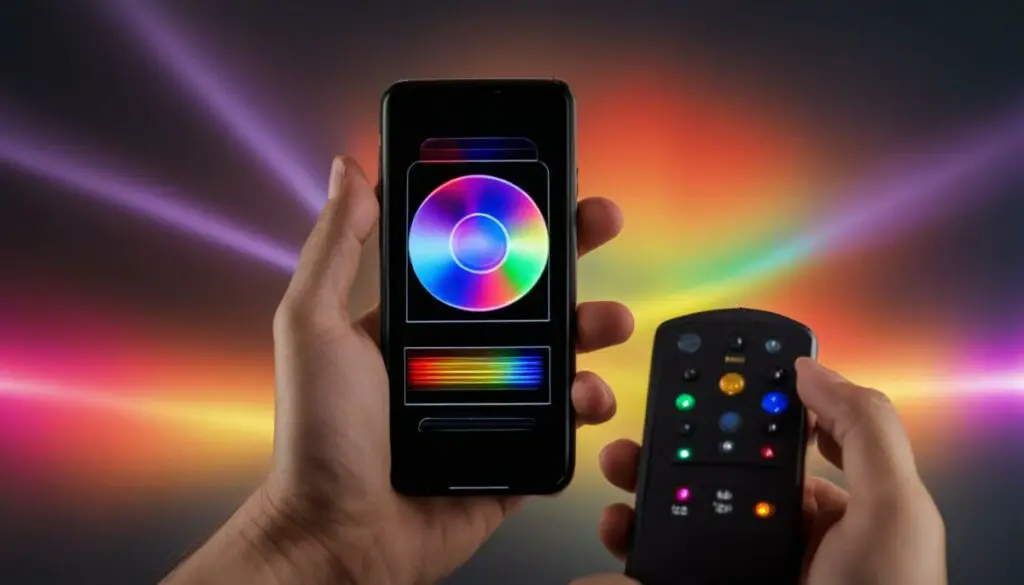
Capturing infrared images with your cell phone camera is an exciting adventure that requires some preparation. To get started, follow these steps:
- Find a suitable location with good lighting and no obstructions.
- Remove any phone case or cover that may interfere with the camera’s sensors.
- Enable the infrared feature on your cell phone camera. Note that not all cell phone models have this feature.
- Aim your camera at the subject and take a photo.
- View your image and make any necessary adjustments to lighting and focus.
Tip: It is best to capture infrared images in areas with low light. Increasing the exposure time can also help enhance the infrared effect.
“Infrared photography with cell phone cameras has opened up new possibilities for enthusiasts seeking to expand their photography skills. With the right preparation and technique, stunning infrared images can be captured with just a cell phone camera.”
Keep in mind that the quality of your infrared images may vary depending on your phone model and its infrared capabilities. Also, keep in mind the limitations of your cell phone camera as discussed earlier in this article.
However, don’t let these limitations hold you back from exploring the creative potential of infrared photography with your cell phone camera. With some preparation and a willingness to experiment, you can capture stunning infrared images that are sure to impress.
Exploring Different Applications of Cell Phone Infrared Photography

If you think that infrared imaging is only for military or scientific purposes, think again. With the advent of infrared cameras for cell phones, anyone can explore the creative potential of this technology. Let’s take a look at some of the fascinating applications of cell phone infrared photography:
Ghost Hunting
Have you ever heard of capturing ghosts on camera? While the existence of ghosts is up for debate, many paranormal enthusiasts believe that infrared technology can help capture their presence. With a smartphone infrared camera, you can investigate haunted locations and look for any anomalies that cannot be seen with the naked eye. Who knows? You might just capture something spooky!
Wildlife Observation
Infrared cameras for cell phones can also be used to observe wildlife without disturbing them. With the ability to see in the dark, you can capture images of nocturnal animals that are otherwise difficult to spot. Additionally, infrared technology can help you distinguish between living and non-living objects, making it easier to spot animals hiding in foliage.
Home Inspection
Are you worried about potential leaks, drafts, or missing insulation in your home? Infrared technology can help identify areas where heat is escaping or entering your home. By using an external infrared camera for your cell phone, you can easily scan your walls, ceilings, and floors for potential issues. This can help you save money on energy bills and prevent any structural damage.
Medical Diagnosis
Infrared imaging with a smartphone camera can also be used for medical purposes. Infrared cameras can detect temperature differences in the body, which can help diagnose conditions such as inflammation, nerve damage, or circulatory disorders. While this technology is not a replacement for professional medical equipment, it can be a useful tool for monitoring your health.
As you can see, the possibilities of cell phone infrared photography are endless. From detecting ghosts to monitoring your health, this technology can enhance your creativity and provide insights beyond what the naked eye can see.
The Future of Infrared Technology in Cell Phone Cameras
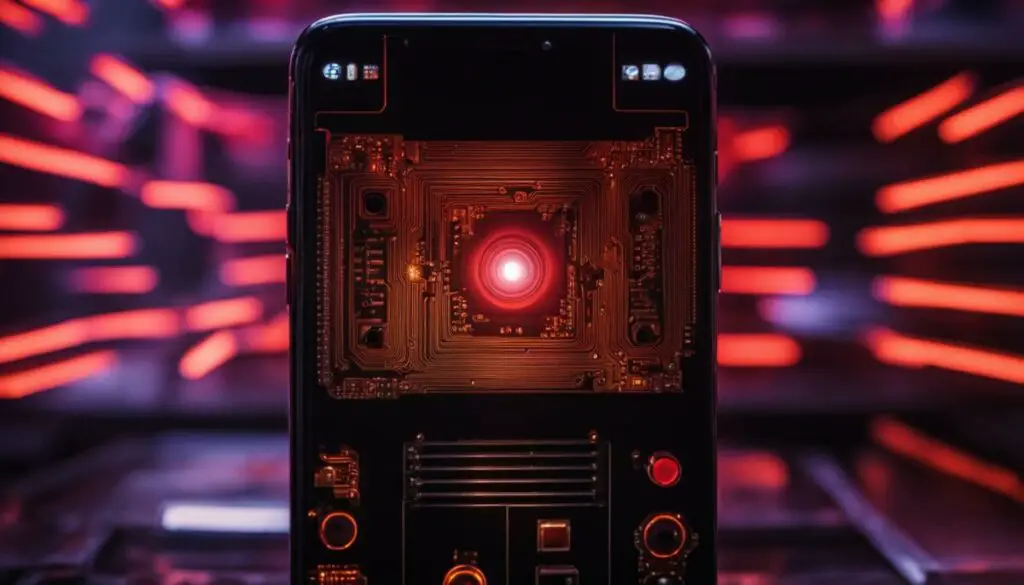
The future of cell phone cameras with infrared technology is promising. There is a growing demand for smartphone infrared cameras and manufacturers are taking notice.
Infrared cameras for cell phones are becoming more accessible and affordable. Companies, such as FLIR, SEEK, and Therm-App, are producing external infrared cameras that can be attached to smartphones. These devices offer a range of features, such as adjustable focus, high resolution, and thermal imaging, making them ideal for various applications.
The potential for integrating infrared capabilities into standard smartphone cameras is also being explored. Samsung has patented a technology that could enable smartphones to capture infrared photography. This feature could be used for facial recognition and augmented reality applications.
The development of smartphone infrared cameras could also revolutionize industries such as healthcare, security, and automotive. For example, infrared cameras could be used to detect illnesses or to monitor the temperature of car engines.
With the increasing demand for smartphone infrared cameras, it is likely that we will see more advancements in this technology in the near future.
“The demand for smartphone infrared cameras is expected to grow significantly in the coming years.”
Tips for Getting the Best Results with Cell Phone Infrared Photography
Now that you have a basic understanding of infrared technology and the capabilities of cell phone cameras in capturing infrared light, let’s dive into some practical tips and tricks to help you get the best results with cell phone infrared photography.
1. Find the Right Lighting Conditions
Infrared photography requires specific lighting conditions, including bright sunlight, and often works best during midday or early afternoon. You should avoid a cloudy day or low light conditions, as this can result in grainy or blurry images.
2. Use an External Lens or Camera
While cell phone cameras can capture some infrared light, using external lenses or cameras can significantly enhance your results. There are several external infrared lenses and cameras available in the market that you can attach to your cell phone to capture high-quality infrared images.
3. Experiment with Different Filters
Filters play a crucial role in infrared photography as they help to block out light that doesn’t fall within the infrared spectrum. You can experiment with different filters to achieve different effects and enhance your images. Some filters can be easily attached to your phone’s camera, while others may need to be held or taped in front of the lens.
4. Adjust Your Camera Settings
Before capturing an image, experiment with your camera settings, including aperture, shutter speed, and ISO, to ensure optimal results. Try shooting on manual mode, as this will give you more control over your camera settings and the final image.
5. Post-Process Your Images
After capturing your infrared images, post-processing is essential to enhance your results. You can adjust the contrast, brightness, and saturation to achieve a more dramatic effect. Many photo editing software, including Lightroom and Photoshop, offer specific tools for infrared photography that you can use to further enhance your images.
6. Practice and Experiment
Like any other form of photography, practice makes perfect. Don’t be afraid to experiment with different techniques and settings to achieve your desired result. Take time to explore the possibilities of infrared photography and unleash your creativity!
Conclusion
After exploring the capabilities of cell phone cameras to capture infrared light, we have discovered that while they have limitations, external infrared cameras offer a solution for enthusiasts seeking to explore the world of infrared photography with their phones.
With advancements in technology, the future looks promising for integrating infrared capabilities into standard smartphone cameras, which will open up an exciting world of possibilities for cell phone infrared photography.
Tips for Getting the Best Results with Cell Phone Infrared Photography
If you are interested in exploring infrared photography with your cell phone, here are some tips to help you achieve the best results:
- Look for a dedicated infrared camera app or download a filter app to help you get started.
- Experiment with different light sources and environments to determine the best settings for your photos.
- Consider using a tripod or stabilizer to minimize camera shake and achieve sharper images.
- Try different compositions and angles to create visually striking infrared images.
- Be open to creative experimentation and have fun exploring this fascinating new world of photography.
With these tips in mind, you’ll be well on your way to capturing stunning infrared images with your cell phone camera.
FAQ
Can cell phone cameras see infrared?
No, most cell phone cameras cannot see infrared light. They are designed to capture visible light only.
How can I enable infrared on my cell phone camera?
Unfortunately, you cannot enable infrared on your cell phone camera as it requires specialized hardware.
What are the limitations of cell phone cameras for infrared photography?
Cell phone cameras have built-in infrared filters that block infrared light, making it difficult to capture true infrared images. Additionally, they lack the specialized lenses required for optimal infrared photography.
Are there external infrared cameras for cell phones?
Yes, there are external infrared cameras available that can be attached to cell phones. These specialized cameras bypass the limitations of built-in cell phone cameras and allow for infrared imaging.
How do I capture infrared images with my cell phone camera?
To capture infrared images with your cell phone camera, you would need to attach an external infrared camera designed for cell phones. Simply follow the instructions provided with the external camera to capture infrared images.
What are the applications of cell phone infrared photography?
Cell phone infrared photography can be used in various applications such as ghost hunting, wildlife observation, and artistic expression. It provides a unique perspective that is not easily achievable with traditional visible light photography.
What does the future hold for infrared technology in cell phone cameras?
The future looks promising for integrating infrared capabilities into standard cell phone cameras. With advancements in technology, we can expect to see improved infrared imaging capabilities in future cell phone models.
How can I get the best results with cell phone infrared photography?
To achieve the best results with cell phone infrared photography, consider composition, lighting, and post-processing techniques. Experimentation and practice will help you refine your skills and capture stunning infrared images.


